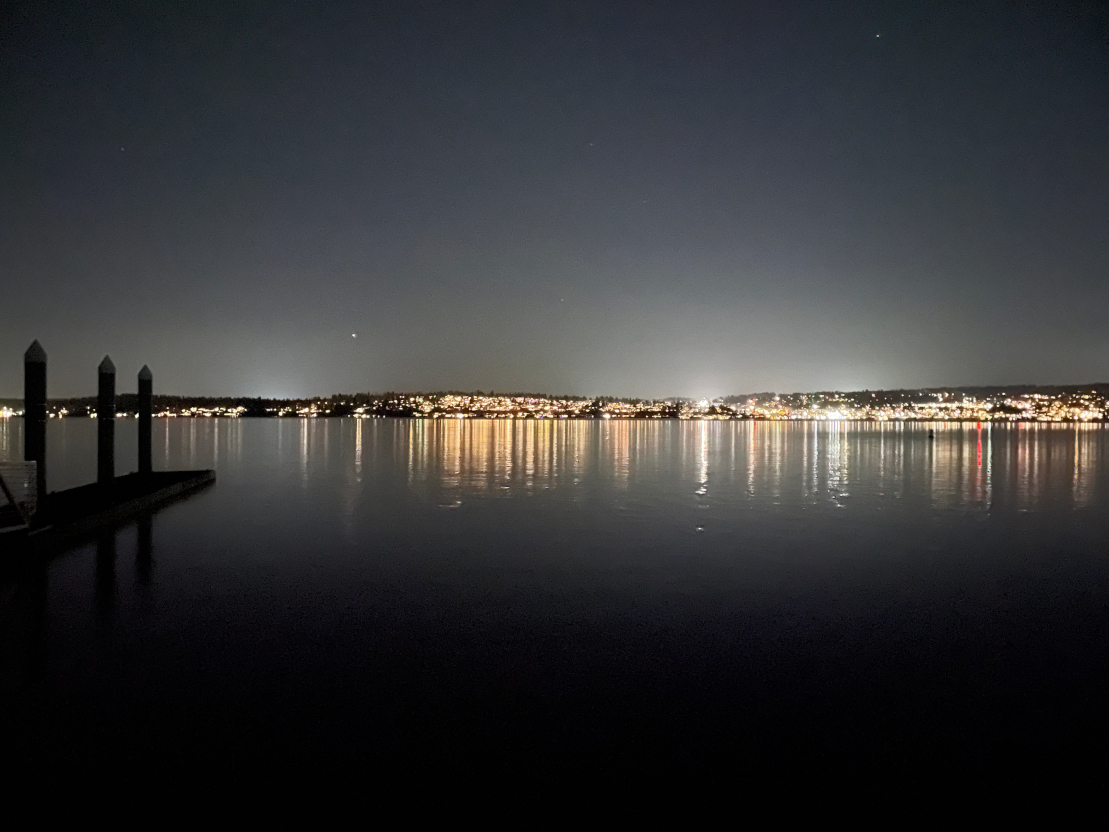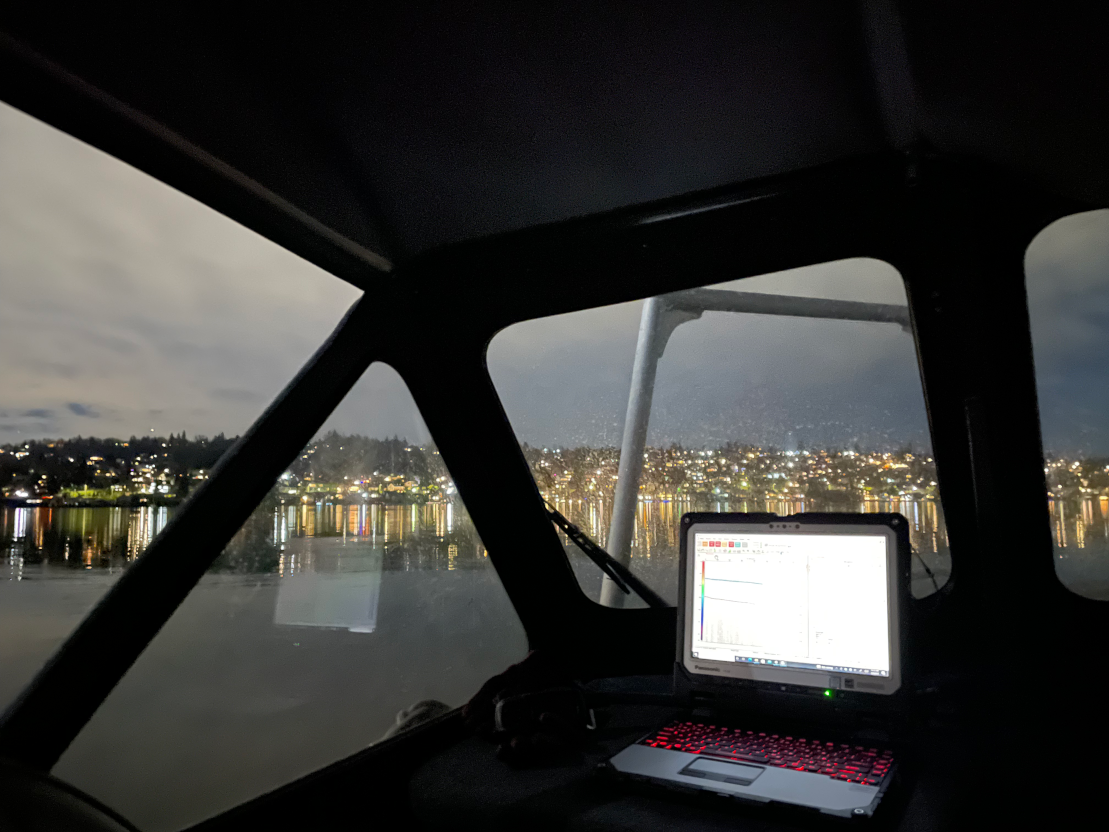Artificial Light at Night Effects on Predation Risk in Lake Washington
Tessa Code
Summary
Salmon and their predators are primarily visual feeders 1–4. Juvenile sockeye salmon undergo diel vertical migrations to balance foraging opportunities with risk of predation 2,5. These vertical migrations have been correlated with changing light levels, suggesting that juvenile salmon ascend and descend to maintain a constant light environment 6,7. Artificial light at night (ALAN) disrupts natural light cycles by extending low-light conditions, increasing nocturnal light levels, and obscuring seasonal light fluctuations. As ALAN increases in urban watersheds, even a small shift in pelagic light level could create large changes in fish distribution, behavior, and foraging vulnerability 8. How does juvenile salmon depth distribution and behavior respond to daily, lunar, and seasonal changes in light? How do these prolonged low light conditions influence the risk of predation?
Waterbodies with urban light may impede or alter diel vertical migration of aquatic animals including fish. Early salmon life stages respond to artificial light: fry disperse later 9; fry delay or halt migration 10; fry aggregate in lighted nearshore areas 11,12; and smolts exhibit increased activity level 13. Juvenile sockeye salmon rely on the deep (over 20m) freshwater environment for between 12-15 months 14,15 yet there have been no studies that quantify the response of juvenile salmon to ALAN in the limnetic zone. Altered timing of diel vertical migration, due to ALAN-sourced increased light, potentially impacts juvenile salmon bioenergetics, subsequent growth, and survival.
Over the past two decades, ALAN surrounding Lake Washington has dramatically increased. The population of Seattle has increased by 32% and high-pressure sodium bulb streetlighting has been replaced by substantially brighter light emitting diodes (LED) to reduce energy consumption. The brighter light environment has changed the optical properties of Lake Washington and may affect the depth distribution, behavior, and survivorship of juvenile sockeye. Determining how ALAN affects juvenile sockeye behavior is a necessary step to improving the sockeye population abundance and the restoration of the sport fishery in Lake Washington.
Current research steps focus on quantifying the light level in Lake Washington over daily, seasonal, and lunar cycles. To capture the variability of light throughout the lake and to record the rate of light extinction at water depth, multiple light measurement tools are being utilized and compared. Areas of “high” and “low” ALAN have been identified and bimonthly acoustic monitoring of fish depth, distribution, and behavior is ongoing.
If you have further questions, please contact Tessa Code (tcode@uw.edu)
This work is supported by the National Science Foundation Graduate Research Fellowship, WRIA-8 Salmon Recovery Council, USGS Western Fisheries Research Center, Washington State Lake Protection Association, and the University of Washington HM Keller Fund.
.
References
[1] Beauchamp et al (1999) Can. J. Fish. Aquat. Sci. 56, 128–139
[2] Eggers (1978) Limnol. Oceanogr. 23, 1114–1125
[3] Mazur et al (2003) Environ. Biol. Fishes 67, 397–405
[4] Nowak et al (2002) Trans. Am. Fish. Soc. 131, 452–462
[5] Clark et al (1988) Am. Nat. 131, 271–290.
[6] Levy et al (1990) Can. J. Fish. Aquat. Sci. 47, 1796–1802
[7] Scheuerell et al (2003) Ecology 84, 1713–1720
[8] Mazur et al (2006) J. Fish Biol. 69, 151–175
[9] Riley et al (2013) Biol. Conserv. 158, 140–146
[10] Tabor et al (2004) North Am. J. Fish. Manag. 24, 128–145
[11] Tabor et al (2021) Lake Reserv. Manag. 37, 313–322.
[12] Tabor et al (2017) Trans. Am. Fish. Soc. 146, 753–761
[13] Nemeth et al (1992) North Am. J. Fish. Manag. 12, 684–692
[14] Foerster (1968) Fish Res Board of Can Bull 162
[15] Narver (1970) Fish Res Board of Can 26: 281-316.

